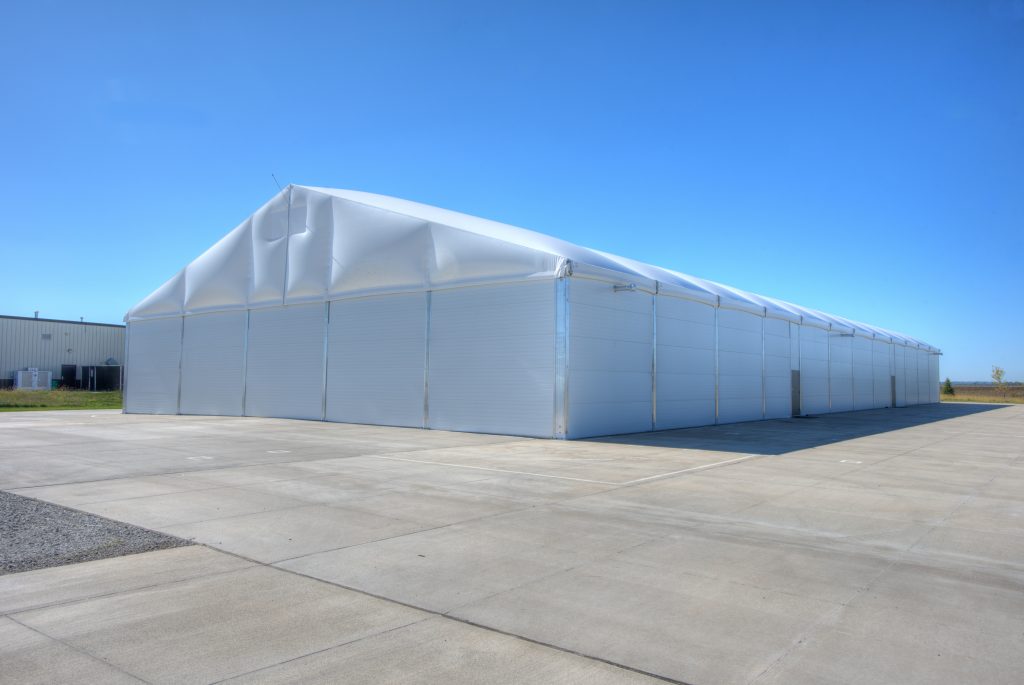Is Your Company Prepared To Deploy The Temporary Warehouse?
Take Distribution And Storage To The Next Level With Temporary Storage Buildings
With the global economy strengthening and the synchronized regional recovery continuing, there is an increase in the need to generate space-saving with an improvement in the productivity of distribution centers to accommodate speedier, shorter, and more flexible supply chains. Furthermore, automation is one of the alternative methods available to achieve these goals. This was expressed by one theme at the Salon International du Transport et de la Logistique (SITL) in Paris from March 20th to March 23rd in 2018. Attendants of the SITL 2018 event identified the strength of the automation as a marketing trend in the warehouse, and May 2018’s Multimodal event in Birmingham reiterated the trend. However, the trend of autonomous warehouses including artificial intelligence with automation is merely the tip of the automation iceberg. Supply Chain 4.0 and Industry 4.0 are changing the industry of traditional temporary warehouse marketing. at Temporary Warehouse Structures, we are on the cutting edge; providing you with a more cost-effective means to break into the newest level of business.
1. Reinvention Of The Temporary Warehouse/DC
A revolution is coming to the warehouse and to all warehouse technicians. Business models and markets are constantly changing with growing unpredictable consumer demand, new sales techniques, and a shorter product life cycle with more flexible solutions to increase the level of consumer satisfaction. However, the challenge remains to place the consumer at the center of all changes in the value change.

What does this mean for the Temporary warehouse?
All robotics and automation in a warehouse will help increase automatic technology leading to increased, high-velocity operations using an integration of warehouse management software and real-time data analysis. Moreover, the warehouse operates that are not prepared or able to invest in the new technologies, transformation projects, or hiring higher-skilled employees will disappear from the landscape in the near future. Real-time data management has prompted the problem of integration between physical and digital operations within the warehouse, as is described in a report published by the Deloitte University Press. The report indicates that sharing data in a real-time method among all supply chain stakeholders can be conducted utilizing advanced technology. This technology also enables companies to improve supply chain planning; thereby, optimizing distribution networks which can result in volume allocation for mid-term delivery windows and better lead-time. The above information points out that inventories will be closer to consumers, collaboration load and route planning will be more effectively scheduled, a reduction in operating costs will be seen, and there will be optimization in warehousing networks and transportation. All of these results will be achieved via real-time connectivity and digitalization. Consequentially, the DC strategies will alter the market containing a percentage of the buildings of the standardized logistics. Large storage spaces including flexible automation solutions, known as fulfillment centers, will exist with last-mile deliver warehouses which are smaller spaces closer to consumers supporting urban deliveries.
2. The Temporary Warehouse
The primary warehouse change to be expected is the development of a temporary warehouse solution. Consumer demand is complicated to predict due to the short product lifespan, the market fluctuations, and the business’ supply chains; therefore, the warehouse needs to become flexible to help follow the relevant market fluctuations and predict supply chains. Moreover, due to the retailers and manufacturers wanting inventories to be nearer to their consumers, collaborative and connected warehouse networks will be formed to promote effective use and sharing warehouse capacities. This means that the third-party logistics providers, also known as 3PLs, present a unique opportunity to create a multi-user warehouse with shorter-term leases signed by companies with their consumers in mind; however, connected to an international and collaborative warehouse network. The need for collaborative warehouse networks is the reason why a warehouse on-demand concept is highly likely to become a realistic alternative. This concept presents an increase in the space usage ration; thereby, offering increased flexibility to companies and improved modification of the supply chains to market changes with constantly changing sales techniques. The primary challenge to 3PLs is the movement from a traditional model to a collaborative approach. For example, movement of selling standard lease space to a flexible model including the warehouse on-demand alternative. To be certain, this is a great opt for change that should not be undervalued as it requires major changes for the 3PLs to become a more collaborative, adaptable, and transparent option, particularly for the medium-sized 3PLs. To meet the requirements for change, traditional business models need to meet the requirements for Supply Chain 4.0. Take a look at our warehouse services page to see how best we can accommodate you and your business.
If you have any questions on temporary warehouses or think you should consider one in the near future call us or contact us today.
We are continually proud to offer our clients superior material, craftsmanship, and structurally sound clear span buildings.
CONTACT US TODAY
For more information or a quote, please contact us. Find out how Temporary Warehouse Structures can help with your next project.

